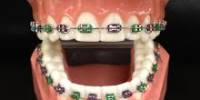Potential microbial players in food allergies have been identified in a new study conducted by the University of Chicago and Stanford University on pairs of twins with and without food allergies. The findings were reported in the Journal of Clinical Investigation on January 19, 2021.
The study was developed out of previous research on the fecal microbiota in babies conducted in the Nagler group at UChicago. The healthy baby microbiota was found to be protective against the development of food allergies when researchers transplanted fecal microorganisms from healthy and food-allergic neonates to germ-free mice (who do not have a microbiome).
“In this study, we looked at a more diverse population across a large range of ages,” said Cathryn Nagler, Ph.D., the Bunning Family Professor in the Pritzker School of Molecular Engineering, the Department of Pathology, and the College at UChicago.
“By studying twin pairs, we had the benefit of examining genetically identical individuals who grew up in the same environment, which allowed us to begin to parse out the influence of genetic and environmental factors.”
Fish, shellfish, peanuts, and tree nuts, such as walnuts, are the foods that most commonly cause allergic responses in adults. Eggs, milk, peanuts, tree nuts, soy, and wheat can all be problematic foods for youngsters. It’s possible that the allergic reaction will be minor. Anaphylaxis is a severe allergic reaction that can occur in rare situations.
Scientists gathered feces samples from a unique, well-controlled cohort of twins concordant or discordant for food allergy to find bacterial signatures and metabolic pathways that may influence the manifestation of this disease. Integrated 16S rRNA gene amplicon sequencing and liquid chromatography-tandem mass spectrometry metabolite profiling were used to examine the samples.
In our study, we harnessed the benefits of both high-throughput microbiome sequencing and metabolic profiling techniques and were able to nominate two specific species, each involved in distinct metabolite pathways, that can be prioritized as potential targets for future research and therapeutic interventions in food allergies.
Riyue Bao
Nagler and her Stanford colleague Kari Nadeau, MD, Ph.D., decided to work on the project after a discussion at a research conference. Nadeau, the Director of the Sean N. Parker Center for Allergy and Asthma Research, was working on a study on the epigenetics of food allergies and had previously collected feces samples from participants.
Nagler’s lab sequenced samples from 13 pairs of twins with and without food allergies, as well as five pairs of twins with at least one food allergy.
The researchers examined whether microorganisms were present in the feces, as well as metabolic products (called metabolites) obtained not only from the microbes but also from the host and food sources.
“We desperately need biomarkers to understand the immunoregulatory function of intestinal bacteria,” said Nagler. “Metabolites give us clues as to what bacteria are doing mechanistically to regulate the immune response.”
This method found 64 different bacterial species and metabolites that distinguished the healthy from the allergic twins. The majority of these differentially abundant bacteria belonged to the Clostridia genus, which has been demonstrated to protect against food allergies in multiple previous Nagler lab publications.
Healthy and allergic twins were separated by a bacterial signature of 64 operational taxonomic units (OTUs); the OTUs enriched in the healthy twins were mostly Clostridia taxa. In each group, we found significant enrichment in different metabolite pathways. The enrichment of diacylglycerol in healthy twins is of special relevance because of its potential as a fecal biomarker of health that can be measured easily.
In addition, a combined microbial-metabolomic study revealed a substantial link between healthy twins and the bacteria Phascolarctobacterium faecium and Ruminococcus bromii, implying new avenues for the development of live microbiome-modulating biotherapeutics.
Despite separation and lifestyle changes, the healthy twins’ allergy-protective microorganisms were enriched, which was likely established early in life. In addition, the diacylglycerol metabolic pathway and two particular bacteria, Phascolarctobacterium faecium and Ruminococcus bromii, were found to be enriched in healthy twins.
“To narrow down from thousands of bacteria to specific species as candidates for future therapeutic interventions, one dimension of data is not enough bringing together data from multiple dimensions is the key,” said first author Riyue Bao, Ph.D., now a Research Associate Professor of Medicine at the University of Pittsburgh.
“In our study, we harnessed the benefits of both high-throughput microbiome sequencing and metabolic profiling techniques, and were able to nominate two specific species, each involved in distinct metabolite pathways, that can be prioritized as potential targets for future research and therapeutic interventions in food allergies.”
“Tons of people will go to Google and they want to know: ‘Should I eat yogurt? Should I not eat yogurt? Does my microbiome play a role in my disease?’” said Nadeau.
“This research is important as one of key ‘bricks’ in the knowledge of the human microbiome that needs to be laid down to answer these questions. We can’t say this is a cause-and-effect relationship yet, but we can say that there is an association with disease and health. So now we can start to ask, what does this mean?”
Despite the fact that the study only enrolled a limited number of people, experts are pleased about the findings and how they might be applied to future projects.
Future research will look into the precise roles of these bacteria in food allergies; R. bromii, for example, is a keystone species in the destruction of resistant starch, a type of dietary starch that ordinarily escapes digestion.
Nagler wants to see how resistant starch supplementation affects R. bromii’s abundance in the fecal microbiome, and whether it can improve the response to oral immunotherapy, which is presently the only treatment for food allergies.
The study, “Fecal microbiome and metabolome differ in healthy and food-allergic twins,” was supported by the Sunshine Charitable Foundation, the Moss Family Foundation, NIAID (R56AI134923, R01AI140134), and NHLBI (R01HL118162).
Additional authors include Riyue Bao of the University of Chicago (now at the University of Pittsburgh Medical Center), Lauren A. Hesser of UChicago, and Ziyuan He and Xiaoying Zhou of Stanford University.
















